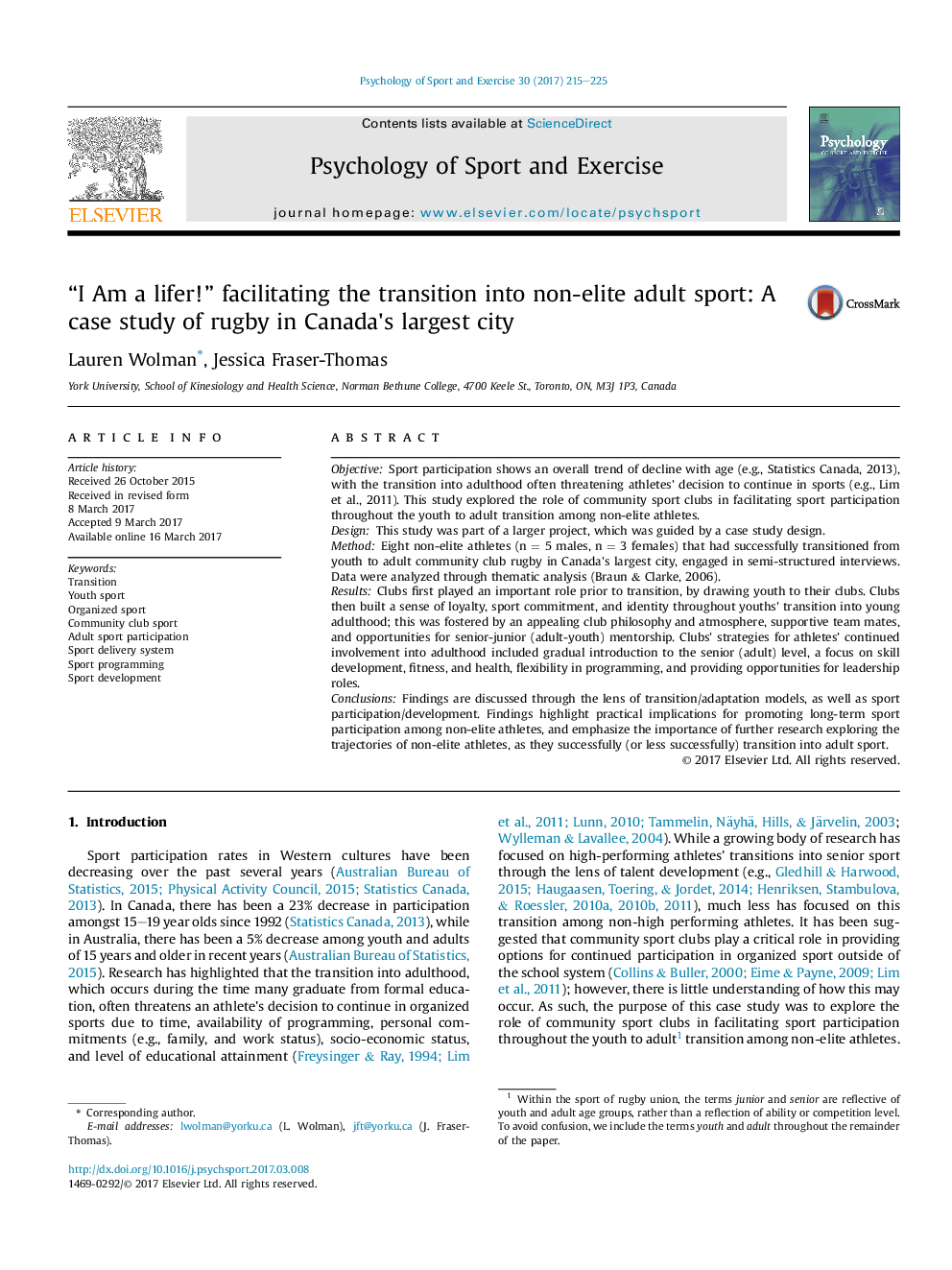| کد مقاله | کد نشریه | سال انتشار | مقاله انگلیسی | نسخه تمام متن |
|---|---|---|---|---|
| 5036449 | 1472097 | 2017 | 11 صفحه PDF | دانلود رایگان |

- Outlines resources for continuity among non-elites - youth to adult transition.
- Informs sport transition, participation, and development models for non-elites.
- Offers implications for sport continuity: community, commitment, and opportunities.
ObjectiveSport participation shows an overall trend of decline with age (e.g., Statistics Canada, 2013), with the transition into adulthood often threatening athletes' decision to continue in sports (e.g., Lim et al., 2011). This study explored the role of community sport clubs in facilitating sport participation throughout the youth to adult transition among non-elite athletes.DesignThis study was part of a larger project, which was guided by a case study design.MethodEight non-elite athletes (n = 5 males, n = 3 females) that had successfully transitioned from youth to adult community club rugby in Canada's largest city, engaged in semi-structured interviews. Data were analyzed through thematic analysis (Braun & Clarke, 2006).ResultsClubs first played an important role prior to transition, by drawing youth to their clubs. Clubs then built a sense of loyalty, sport commitment, and identity throughout youths' transition into young adulthood; this was fostered by an appealing club philosophy and atmosphere, supportive team mates, and opportunities for senior-junior (adult-youth) mentorship. Clubs' strategies for athletes' continued involvement into adulthood included gradual introduction to the senior (adult) level, a focus on skill development, fitness, and health, flexibility in programming, and providing opportunities for leadership roles.ConclusionsFindings are discussed through the lens of transition/adaptation models, as well as sport participation/development. Findings highlight practical implications for promoting long-term sport participation among non-elite athletes, and emphasize the importance of further research exploring the trajectories of non-elite athletes, as they successfully (or less successfully) transition into adult sport.
Journal: Psychology of Sport and Exercise - Volume 30, May 2017, Pages 215-225